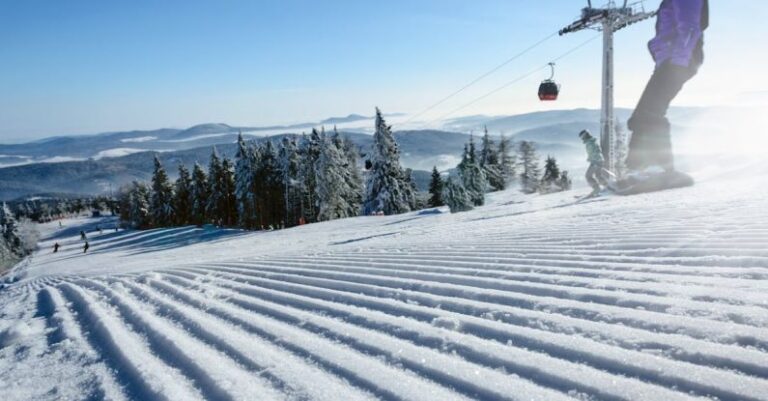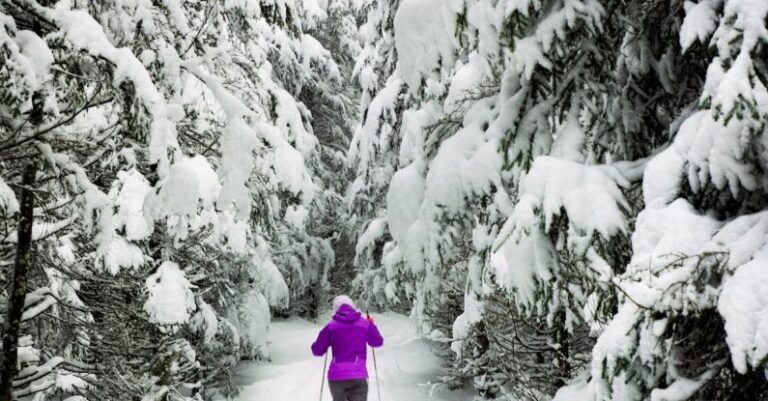
When it comes to winter sports, skiing is a popular choice for enthusiasts looking to hit the slopes and enjoy the snowy landscapes. Two prevalent forms of skiing are downhill skiing and cross-country skiing. While both activities involve gliding over snow on skis, there are distinct differences between them that cater to different preferences and skill sets. Whether you’re a seasoned skier or a newcomer looking to try out the sport, understanding the disparities between downhill and cross-country skiing can help you choose the right adventure for your next snowy escapade.
**Skiing Terrain and Technique**
One of the most significant variances between downhill and cross-country skiing lies in the terrain and technique used in each activity. Downhill skiing, also known as alpine skiing, typically takes place on steep slopes at ski resorts. Downhill skiers rely on ski lifts to reach the top of the mountain before descending down challenging runs that often feature twists, turns, and varying levels of difficulty.
In contrast, cross-country skiing involves traversing flat or gently rolling terrain over longer distances. Cross-country skiers use a gliding motion to propel themselves forward, often traveling through scenic trails in forests or open fields. This form of skiing requires endurance and stamina, as skiers rely on their own physical strength to navigate the terrain rather than relying on gravity for speed.
**Equipment**
Another key difference between downhill and cross-country skiing is the equipment used for each activity. Downhill skiing equipment includes shorter, wider skis with metal edges that provide stability and control when navigating steep slopes. Downhill ski boots are rigid and designed to provide support and responsiveness, while bindings secure the skier’s boots to the skis, allowing for quick turns and precise movements.
On the other hand, cross-country skiing equipment is lighter and more flexible to accommodate the skier’s need for efficient gliding over flat terrain. Cross-country skis are longer and narrower than downhill skis, with no metal edges to allow for smooth movement. Cross-country ski boots are softer and provide ankle flexibility for a more natural stride, and bindings are designed to allow the skier’s heel to lift off the ski during each stride.
**Speed and Thrills**
For adrenaline junkies seeking speed and thrills, downhill skiing offers the rush of descending steep slopes at high velocities. Downhill skiers can reach impressive speeds as they navigate challenging runs, making quick turns and carving through fresh powder. The excitement of downhill skiing lies in the dynamic nature of the sport, with skiers able to test their skills on a variety of terrains and obstacles.
In contrast, cross-country skiing provides a more serene and meditative experience, with skiers gliding peacefully through tranquil landscapes. While cross-country skiing can still offer a physical challenge, it focuses more on endurance and enjoying the journey rather than seeking out adrenaline-fueled thrills. Cross-country skiers can take in the beauty of their surroundings at a leisurely pace, making it a popular choice for those looking to connect with nature and enjoy a peaceful winter outing.
**Choosing the Right Skiing Experience**
Whether you prefer the heart-pounding excitement of downhill skiing or the tranquil beauty of cross-country skiing, both activities offer unique experiences that cater to different preferences and skill levels. While downhill skiing is ideal for those seeking speed and technical challenges, cross-country skiing provides a more relaxed and scenic way to enjoy the winter wonderland.
Before hitting the slopes, consider your skiing goals and preferences to determine whether downhill or cross-country skiing is the right choice for your next snowy adventure. Whichever path you choose, both forms of skiing offer exhilarating ways to stay active and embrace the magic of winter in the great outdoors.





